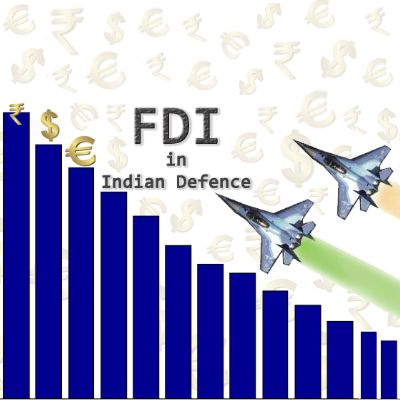Aerospace Defence: Advancements in Aircraft and Missiles

In the ever-evolving landscape of global security, the realm of aerospace defence systems remains pivotal. Over the decades, incredible strides have been made in the fields of aircraft and missile technology, revolutionizing the way nations safeguard their skies and borders. With an increasing focus on innovation and adaptability, aerospace defence systems have transformed to meet the challenges posed by modern warfare and security threats. This article delves into the advancements in aircraft and missile technology, highlighting their crucial role in fortifying national security and promoting global stability.
Aircraft Technology Advancements:
The aerospace industry has witnessed a remarkable shift in aircraft technology, characterized by a relentless pursuit of superior performance, enhanced manoeuvrability, and cutting-edge stealth capabilities. One of the most significant advancements has been the development of next-generation fighter jets, such as the F-35 Lightning II and the Chengdu J-20, which exemplify the integration of advanced avionics, composite materials, and sophisticated radar systems. These jets boast unprecedented agility and are equipped with state-of-the-art sensor systems that enable pilots to operate with enhanced situational awareness, thereby ensuring superior air dominance.
Additionally, the introduction of unmanned aerial vehicles (UAVs) has fundamentally transformed the landscape of aerial surveillance and reconnaissance. Drones, spanning from compact tactical units to expansive, long-range surveillance platforms, now play an indispensable role in monitoring hostile activities, carrying out intelligence missions, and conducting precise strikes. Through the incorporation of artificial intelligence (AI) and sophisticated data processing capabilities, UAVs have substantially enhanced the effectiveness and precision of military endeavors, thereby reducing the hazards linked to manned missions.
Furthermore, the incorporation of advanced materials, such as carbon composites and titanium alloys, has not only reduced the weight of aircraft but also enhanced their durability and resistance to extreme environmental conditions. This has led to the development of robust, high-performance aircraft that can operate seamlessly in diverse terrains and climates, thereby expanding the scope of military missions and strategic deployments.
| Also Read:Safeguarding Satellites: How Space Defence shields Our Modern World |
Missile Technology Advancements:
The domain of missile technology has witnessed a paradigm shift, with a focus on precision-guided munitions and advanced missile defence systems. Advancements in guidance and targeting systems have significantly improved the accuracy and effectiveness of missiles, enabling precise engagement of both stationary and moving targets. The integration of global positioning systems (GPS) and inertial navigation systems (INS) has augmented the overall guidance capabilities, ensuring unparalleled precision and minimizing collateral damage during military operations.
Additionally, the development of hypersonic missiles has emerged as a game-changer in modern warfare, offering unparalleled speed and maneuverability that render traditional missile defence systems obsolete. Hypersonic missiles can travel at speeds exceeding Mach 5, making them extremely difficult to intercept and providing military forces with an unprecedented edge in both offensive and defensive operations. With ongoing research and development, efforts are underway to harness the full potential of hypersonic technology while ensuring its responsible and strategic deployment in global security frameworks.
Furthermore, the evolution of missile defence systems, such as the Aegis Ballistic Missile Defence System and the Terminal High Altitude Area Defence (THAAD), has enhanced the capabilities of nations to counter ballistic missile threats and ensure comprehensive protection of vital assets and population centres. These systems leverage advanced radar technology and kinetic interception mechanisms to detect, track, and neutralize incoming ballistic missiles, thereby strengthening national defence capabilities and fostering regional stability.
Integration of Aerospace Defence Systems:
A key trend in modern aerospace defence systems is the seamless integration of aircraft and missile technologies, enabling comprehensive and synergistic defence capabilities. The integration of air defence systems with ground-based radar networks and satellite surveillance systems has facilitated real-time monitoring and tracking of potential threats across vast territorial boundaries, enabling proactive responses and timely deployment of countermeasures.
Moreover, the convergence of artificial intelligence and machine learning algorithms has empowered aerospace defence systems with predictive analytics and autonomous decision-making capabilities, optimizing response times and enhancing the overall effectiveness of military operations. The use of AI-driven simulations and virtual training environments has also revolutionized pilot training and mission preparedness, ensuring that air forces remain adept at handling complex and dynamic operational scenarios.
Looking Ahead:
Considering the dynamic evolution of the global security scenario, the progression of aerospace defence systems will persist as a crucial priority for nations worldwide. By assimilating emerging technologies like quantum computing, directed energy weapons, and electromagnetic railguns, the future of aerospace defence systems promises unparalleled capabilities and strategic benefits. Additionally, fostering international collaborations and partnerships will be pivotal in cultivating innovation and ensuring the ethical advancement and application of aerospace defence technologies, ultimately contributing to the collective enhancement of global security and stability.
Conclusion:
To sum up, the development of aerospace defence systems serves as a testament to human ingenuity and determination in the midst of shifting security landscapes. The progress in aircraft and missile technology has reshaped the limits of military capabilities, enabling nations to preserve their autonomy and shield their populations from emerging dangers. As we persist in embracing technological advancements, it remains crucial to prioritize ethical concerns and global collaboration, ensuring that aerospace defence systems function as tools for peace and international security.
Furthermore, the ongoing efforts to enhance the sustainability and environmental impact of aerospace defence systems underscore the industry's commitment to responsible and eco-friendly practices. Initiatives aimed at developing energy-efficient propulsion systems and reducing the carbon footprint of military aircraft demonstrate a growing awareness of the need to balance national security imperatives with environmental conservation. Sustainable aviation fuels, advanced electric propulsion systems, and the integration of renewable energy sources represent key focal points in the quest for greener aerospace defence technologies, aligning with global efforts to mitigate climate change and promote sustainable development.
In the context of emerging security challenges, including cyber threats and asymmetric warfare, the resilience of aerospace defence systems heavily relies on robust cybersecurity protocols and advanced encryption mechanisms. Safeguarding critical communication networks, satellite systems, and data repositories is paramount to thwarting potential cyber-attacks and ensuring the integrity and confidentiality of sensitive military information. The integration of blockchain technology and decentralized communication frameworks is poised to fortify the resilience of aerospace defence systems, enabling secure and tamper-proof data exchanges while mitigating the risks associated with cyber vulnerabilities.
In embracing a holistic approach to aerospace defence systems, it is imperative for stakeholders to prioritize transparency, accountability, and ethical standards in the development, deployment, and utilization of advanced technologies. By fostering an environment of international cooperation and knowledge-sharing, nations can collectively harness the transformative potential of aerospace defence systems while upholding the principles of peace, security, and global stability. Through responsible innovation and strategic partnerships, the journey of aircraft and missile technology will continue to shape the future of global security, ensuring a safer and more resilient world for generations to come.









